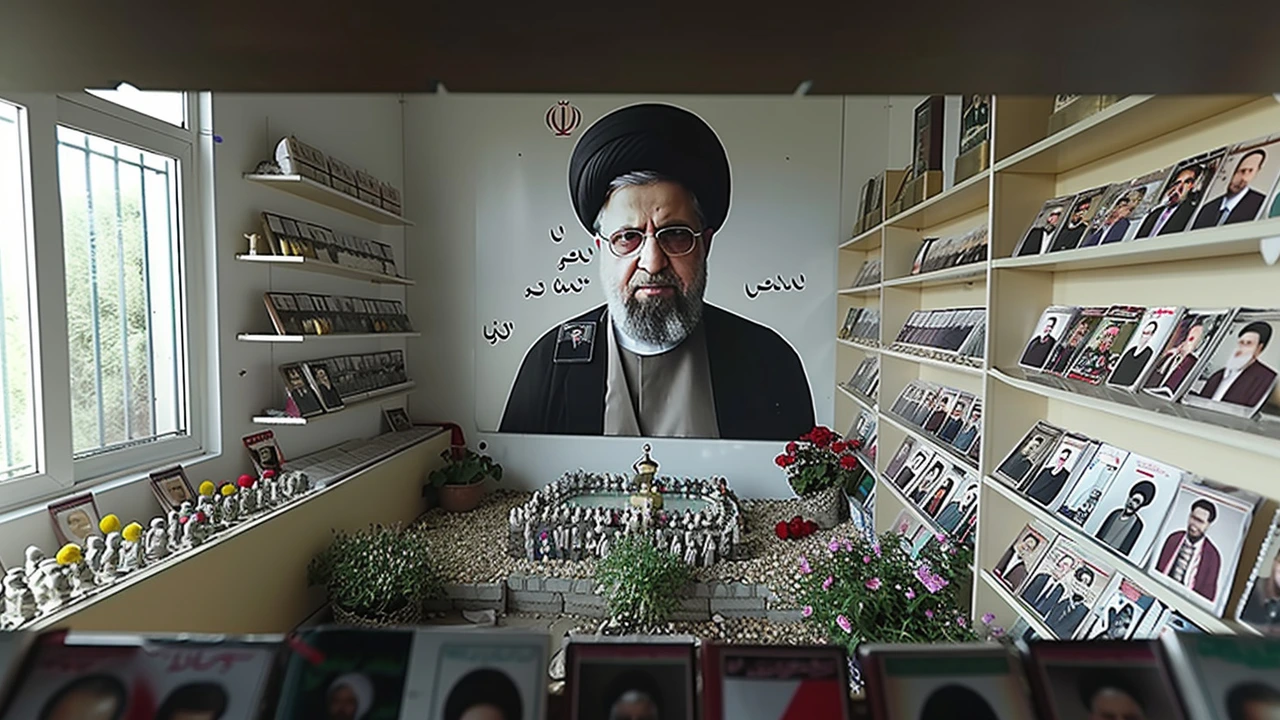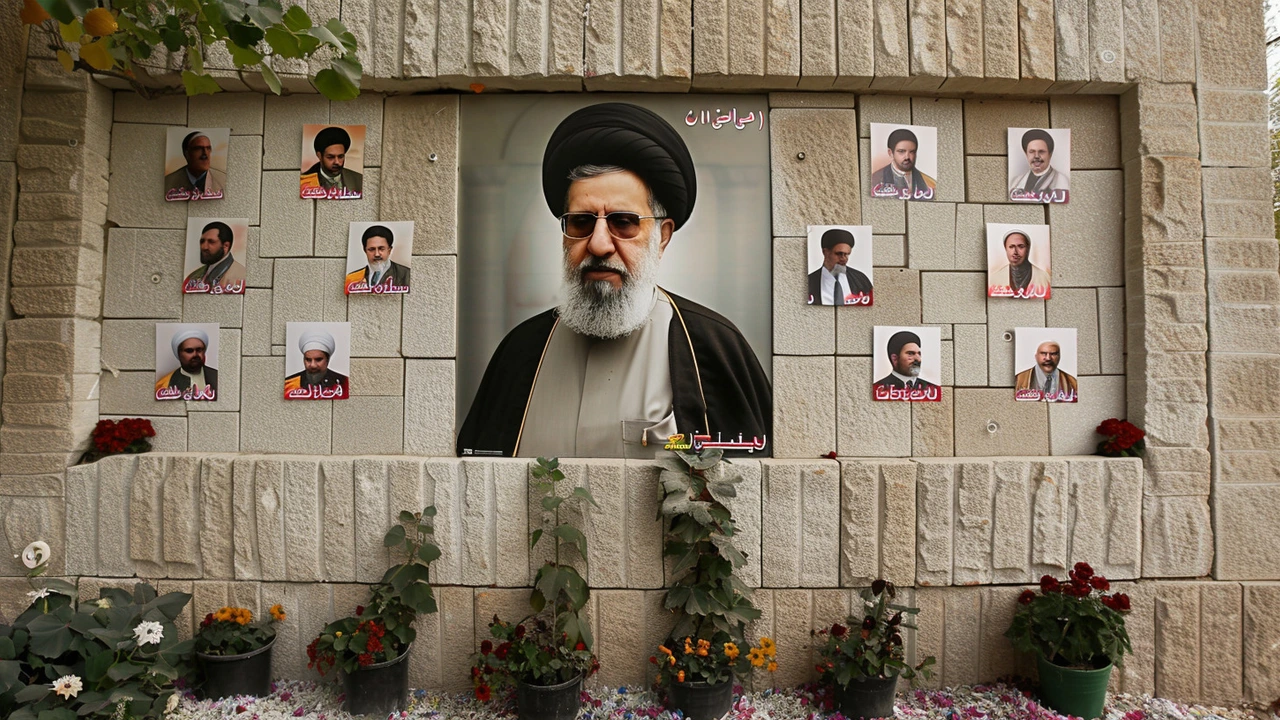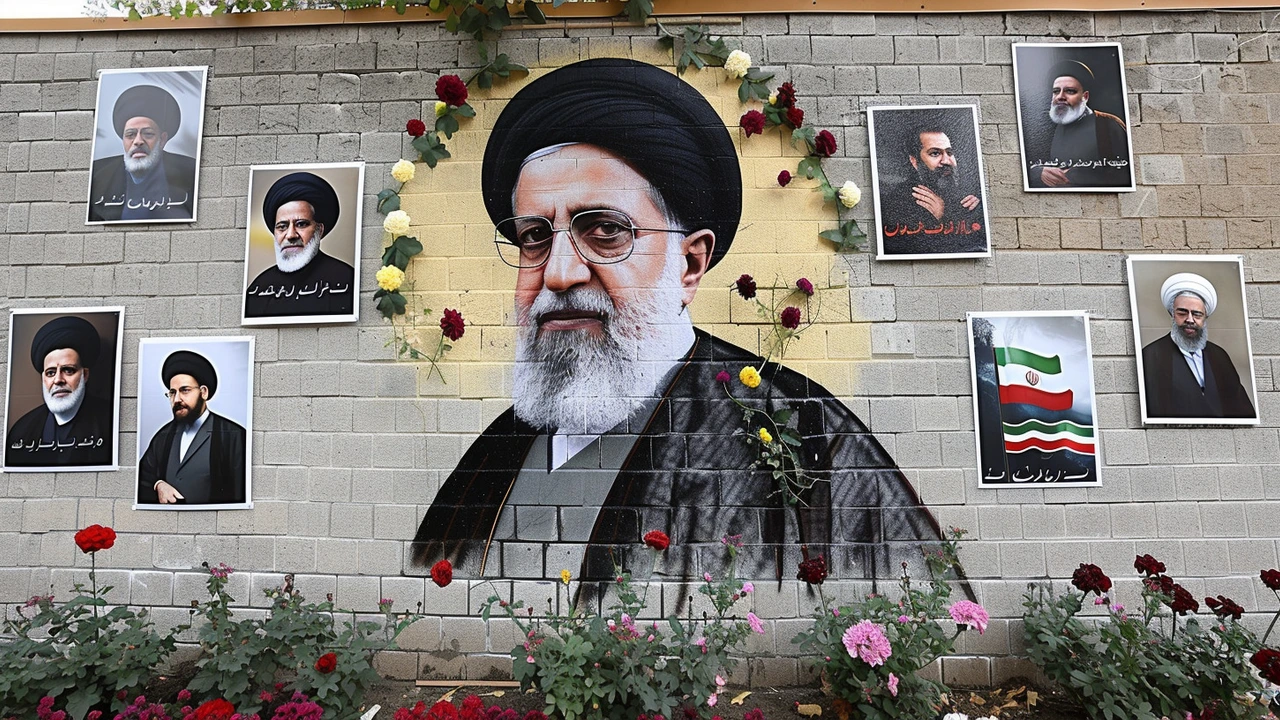Helicopter Crash Report Sparks Controversy
The recent unveiling of the first official report on the helicopter crash that claimed the lives of Iran's late President Ebrahim Raisi and Foreign Minister Hossein Amir-Abdollahian has done little to quell speculations surrounding the tragic incident. On the contrary, it has raised more questions rather than providing clarity. The report, released by Iranian authorities, explicitly states that there was no evidence of an outside attack or interference. It also notes that the helicopter maintained its pre-planned route before ultimately crashing. However, the document offers no concrete reasons for the crash, leaving a cloud of ambiguity around the event.
The highly anticipated report aimed to address growing concerns and rampant speculation that have dominated both traditional and social media since the incident. Many Iranians have met the report with a mixture of skepticism and mockery due to its notable lack of detail. The absence of a clear explanation has only fueled further doubts about the credibility of the armed forces and the government's narrative.
This distrust isn't without precedent. The Islamic Republic has a longstanding history of opacity and deceit, which has led many to approach official statements with a grain of salt. A case in point is the tragic downing of a Ukrainian airliner in 2020. Initially, the Iranian government denied any involvement, only to later admit culpability, stating that the plane was accidentally shot down by the military. Such incidents have left an indelible mark on public perception, making it difficult for many Iranians to fully trust governmental reports.
Public Skepticism and Historical Parallels
The recent helicopter crash report appears to be another chapter in this pattern of distrust. With its vague explanations and lack of substantial detail, the report has done little to convince a skeptical public. Many Iranians are questioning the official story, speculating that there might be more to the incident than what is being shared. Some believe that key details are being deliberately withheld, a sentiment that is not uncommon in a society where transparency has often been in short supply.
The government's struggles with public trust have deep roots. For years, Iranians have witnessed instances where the official narrative sharply contrasted with emerging facts. The 2020 Ukrainian airliner tragedy remains fresh in many minds as a prime example. Initially, officials staunchly denied any wrongdoing, only to backtrack days later. The initial denial and subsequent admission did more than just shake public confidence; it shattered it.
This latest report on the helicopter crash, perceived as another attempt to hush public concerns, could exacerbate the deep-seated mistrust many feel towards their leaders. The lack of transparency is a significant factor that prevents the building of trust between the government and its people. Instead of providing clarity, the report seems to have achieved the opposite, stoking the fires of mistrust even further.

The Report's Content and Public Reaction
The report provides a chronological account of events leading up to the crash, but it stops short of offering any substantial explanation. According to the document, the helicopter was following its designated route without any deviations before it crashed near a remote area. The authority's insistence on the absence of external threats or interference is a point stressed repeatedly throughout the report.
However, the narrative offered does little to explain why the helicopter crashed. This omission has left room for multiple interpretations and theories to fill the void. Critics argue that had there been a mechanical failure or any pilot error, these details should have been included in the report. The lack of such crucial information has led many to suspect that the authorities might be hiding uncomfortable truths.
On social media platforms, responses to the report have ranged from sarcastic comments to outright condemnation. Users have taken to Twitter and Instagram, expressing their dissatisfaction with the report's lack of transparency. Hashtags questioning the credibility of the armed forces have trended, reflecting widespread disappointment and suspicion.
Moreover, the release of this report comes at a time when the Iranian government is already facing multiple challenges, including economic woes and political unrest. Against this backdrop, the helicopter crash and the subsequent report are seen as yet another blow to the administration's already fragile credibility.
The Broader Implications of the Report
The implications of this report extend beyond just this incident. It speaks volumes about the current state of the Iranian government's relationship with its citizens. Transparency and accountability are cornerstones of trust between a populace and its leaders, and these elements appear to be conspicuously absent in this case.
The Iranian public's response to the report can be seen as a barometer of their overall trust in the government. When a society incessantly questions official narratives, it signifies deeper issues at play. In Iran, the kernel of this mistrust lies in a historical pattern of dishonesty and obfuscation by those in power.
Moving forward, it will be interesting to see how the government plans to address the mounting skepticism. Will they offer detailed supplementary reports or engage in open dialogues with independent investigators? Or will they maintain their current stance, hoping that public interest will eventually wane? These are critical questions that the administration needs to consider if they are to rebuild any semblance of trust.

A Question of Trust
Trust, once lost, is challenging to regain. In Iran's case, the road to restoring public confidence is fraught with obstacles. The failure to provide a comprehensive account of such a high-profile incident not only diminishes the government's credibility but also hampers its ability to govern effectively. The importance of transparency and accountability cannot be overstated, particularly in a society where suspicions about leadership run deep.
The helicopter crash report has inadvertently shone a spotlight on the broader issue of governance in Iran. It's not just about one tragic incident; it's about a series of events that have eroded the trust of the people. As such, restoring faith in the system will require more than just half-hearted attempts at transparency. It will require a concerted effort to consistently demonstrate accountability and openness. Until that happens, reports like this will continue to be met with skepticism, and public trust will remain elusive.


 Sports
Sports
george hernandez
May 24, 2024 AT 18:37The release of the official helicopter crash report feels like watching a magician pull a half‑finished illusion out of a dusty hat. The language dances with vague phrases that never quite land. Each paragraph seems to whisper that the aircraft followed its planned path, yet the whisper stops before any explanation. Readers are left to stare at a blank canvas where the truth should be painted. The report mentions no external attack, but it also refuses to name the mechanical or human factor that could have doomed the flight. It is as if the writers decided that saying nothing is better than saying something wrong. The official tone drips with the same certainty that has cloaked past incidents. The lack of concrete data fuels the fire of skepticism that already burns bright in public discourse. One can almost feel the weight of historic cover‑ups pressing against each sentence. The reference to a pre‑planned route feels like a rehearsed line from a play that never gets to its climax. The audience, weary of rehearsed denials, cries out for evidence, for numbers, for the missing puzzle pieces. Yet the document chooses to stay silent, offering only a chronological checklist. This silence becomes louder than any accusation could be. The pattern is unmistakable: a government that prefers opacity over accountability. The result is a widening gulf between the state and its citizens, a chasm that may never be crossed without genuine transparency. In the end, the report stands as a reminder that words without substance are mere smoke.
bob wang
May 28, 2024 AT 19:50After careful review of the document, one must acknowledge the authors' effort to present a chronological account, yet the omission of critical technical data remains conspicuous, thereby undermining confidence, especially among international observers. The language consistently reiterates the absence of external interference, while simultaneously avoiding any discussion of possible mechanical failure, pilot error, or maintenance issues. Such an approach, though perhaps intended to preserve national prestige, unfortunately fuels speculation and erodes credibility, as evidenced by the rapid spread of dissenting commentary across multiple platforms. In light of these observations, it would be prudent for the authorities to consider releasing supplementary details, perhaps in a follow‑up brief, to address the burgeoning concerns of both domestic and foreign stakeholders. 📊📚
Seyi Aina
June 1, 2024 AT 21:03Another vague press release, same old story.
Alyson Gray
June 5, 2024 AT 22:17Wow, that formal tone just hit me like a punch in the gut, lol. I feel the pain of every citizen reading that polished piece while the truth hides behind a curtain of bureaucratic mumbo jumbo. It’s like watching a drama where the actors never show the climax, just keep saying “we’re fine” over and over. My heart aches for the families left in the dark, they deserve more than this cold, glossy statement. Seriously, why cant they just be real for once?
Shaun Collins
June 9, 2024 AT 23:30This is just another smoke screen, nothing more.
Chris Ward
June 14, 2024 AT 00:43Honestly, I think the report is doing its best given the constraints, but maybe we’re over‑reacting. Sure, it’s vague, but could it be that the crash was just a freak accident? Perhaps we’re reading too much into every lack of detail. Still, I get why folks are skeptical – transparency is key.
Heather Stoelting
June 18, 2024 AT 01:57Let’s keep pushing for answers! Every bit of info helps us understand what happened, and we deserve the truth. Stay hopeful, keep asking questions, and don’t let the silence win! 💪
Travis Cossairt
June 22, 2024 AT 03:10Looks like the gov is playing it safe, dropping minimal info. Guess we’ll just have to wait and see what else comes out.
Amanda Friar
June 26, 2024 AT 04:23Sure, stay hopeful, but maybe also check if the helicopter’s black box even existed. Sometimes the “answers” are just dead ends, and pointing out the obvious can save a lot of wasted energy. 😏
Sivaprasad Rajana
June 30, 2024 AT 05:37The report says the helicopter followed its planned route and no outside attack was found. It does not explain why it crashed, so more investigation is needed.
Andrew Wilchak
July 4, 2024 AT 06:50Yo, they just said “nothing weird” and moved on. Not helpful.
Roland Baber
July 8, 2024 AT 08:03When a narrative leaves out the crucial piece, we are reminded that truth often hides in the margins. It is our duty to seek the missing links, to question the silence, and to hold those in power accountable for the gaps they leave. Only through persistent inquiry can we hope to illuminate the darkness surrounding such tragedies.
Phil Wilson
July 12, 2024 AT 09:17From a systems‑engineering perspective, the absence of failure mode documentation is a red flag that suggests a breakdown in the safety case lifecycle. Without a thorough root‑cause analysis, the risk matrix remains incomplete, and regulatory compliance cannot be validated. Stakeholders demand a data‑driven reconstruction, including flight‑data recorder telemetry, maintenance logs, and crew resource management assessments. The current narrative falls short of meeting these technical standards, which undermines confidence in the overall safety assurance process.
Roy Shackelford
July 16, 2024 AT 10:30Of course the official story skips over the nitty‑gritty because there’s a deeper agenda at play. The powers that be want us to believe it was a simple accident, while the truth is hidden behind layers of classified projects and covert operations. Trust no one until the full picture is revealed.
Karthik Nadig
July 20, 2024 AT 11:43It’s all a grand theater, folks – the crash, the report, the silence. Behind the curtains are shadowy forces pulling the strings, and they don’t want the spotlight on their secrets. 🕵️♂️📡 Stay woke!
Charlotte Hewitt
July 24, 2024 AT 12:57yeah, that’s exactly why I’m skeptical of every press release – they’re all part of the same narrative machine. we need independent eyes, not just the same old government memo.
Jane Vasquez
July 28, 2024 AT 14:10Oh sure, let’s all pat ourselves on the back for demanding transparency while conveniently ignoring the messy reality of geopolitics. Some people just love to sound righteous.